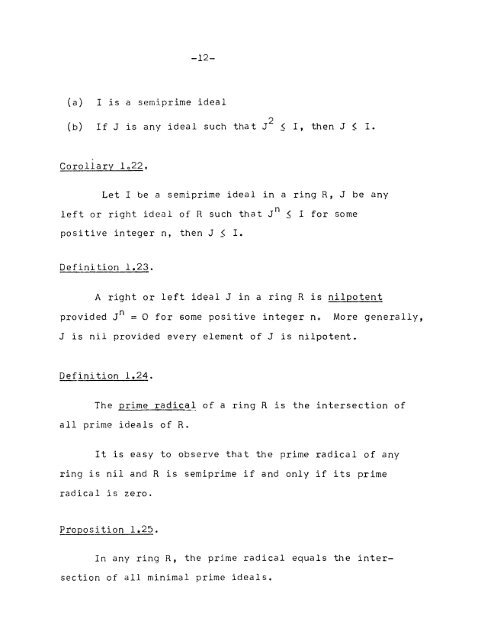Studies in Rings generalised Unique Factorisation Rings
Studies in Rings generalised Unique Factorisation Rings
Studies in Rings generalised Unique Factorisation Rings
You also want an ePaper? Increase the reach of your titles
YUMPU automatically turns print PDFs into web optimized ePapers that Google loves.
-12-<br />
(a) I is a semiprime ideal<br />
(b) If J is any ideal such that J2 S I, then J ~ I.<br />
Corollary 1 022 0<br />
Let I be a semiprime ideal <strong>in</strong> a r<strong>in</strong>g R, J be any<br />
left or right ideal of R such that In ~ I for some<br />
positive <strong>in</strong>teger n, then J 5 I.<br />
Def<strong>in</strong>ition 1.23.<br />
A right or left ideal J <strong>in</strong> a r<strong>in</strong>g R is nilpotent<br />
provided In = 0 for some positive <strong>in</strong>teger no More generally,<br />
J is nil provided every element of J is nilpotent.<br />
Def<strong>in</strong>ition 1.24.<br />
The prime radical of a<br />
r<strong>in</strong>g R is the <strong>in</strong>tersection of<br />
all prime ideals of R.<br />
It is easy to observe that the prime radical of any<br />
r<strong>in</strong>g is nil and R is semiprime if and only if its prime<br />
radical is zero.<br />
proposition 1.25.<br />
In any r<strong>in</strong>g R,<br />
the prime radical equals the <strong>in</strong>tersection<br />
of all m<strong>in</strong>imal prime ideals.
















